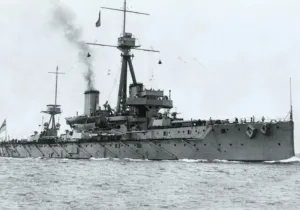Earlier this week Attorney General Jeff Sessions named the international gang MS-13 as a national priority for federal organized crime task forces.
Here is what you should know about the group that has been called the “world’s most dangerous gang.”
1. MS-13 (also known as Mara Salvatrucha, Mara, or MS) is an international criminal gang that originated in Los Angeles in the 1980s and has since spread throughout the U.S., as well as to Mexico, Canada, Guatemala, El Salvador, and Honduras, and other Central American countries. In 2012 MS-13 became the first, and remains the only, street gang designated by the U.S. government as a “transnational criminal organization.”
2. Because of ongoing conflicts in Central America during the 1980s (the Salvadoran Civil War, 1979-1992; the Guatemalan Civil War, 1960-1996; the Nicaraguan Revolution, 1962-1990), both refugees and guerrilla fighters fled to the United States. Many settled in the Rampart area of Los Angeles where they were frequently victimized by the Mexican Mafia, a Hispanic gang that dominated the area at the time. Some of the Salvadoran youth banded together to protect themselves and formed the gang “Mara Salvatrucha.”
3. The gang’s name comes from “mara,” a Central American term for gang; “salva,” referring to El Salvador; and “trucha,” which means “trout” in English and is a slang term for “clever” or “sharp.” The meaning is roughly translated as street-smart Salvadorans.
4. In 1993 leaders of Mara Salvatrucha formed an alliance with the Mexican Mafia. They added the number 13 to their name—standing for “M”, the 13th letter of the alphabet—and marking them as Sureños, an alliance of gangs in the southwest U.S. and Mexico. During this time MS-13 began accepting members of other nationalities, such as Ecuadorians, Guatemalans, Hondurans, Mexicans, and Peruvians.
5. MS-13 frequently recruits boys and girls from middle schools, high schools, and juvenile detention centers. Members are initiated into the gang through a ritual called “beating in” where prospective members are beaten by current members for at least thirteen seconds. Female members are usually initiated through sexual rituals, such as having sex with thirteen members of the gang, but sometimes have the option to be beaten in instead. Once in MS-13, they only way they can get out is through death.
6. The group is considered exceptionally violent, even by the standards of street gangs. One of their mottos is “Mata, roba, viola, controla” (“Kill, steal, rape, control”), and their symbol is a machete. Members frequently use machetes in their crimes, such as in “initiation killings” (i.e., an act of murder as part of the gang’s initiation rituals). Members are expected to kill when instructed, and subordinate leaders are killed for simply refusing to obey an order given by their local leader.
7. In 1996, the U.S. government passed the Illegal Immigration Reform and Immigrant Responsibility Act, which established that non-citizen immigrants convicted of felony offenses would be deported back to their home countries. Many MS-13 members were sent back to Central American countries, where they built new gangs and recruited new members, before returning back to the U.S. As Rodrigo Avila, El Salvador’s vice minister of security, told the Los Angeles Times in 2005, the deportations have helped create an “unending chain” of gang members moving between the U.S. and Central America.
8. In Central America, where the gang is estimated to have about 60,000 members, MS13’s operations include extortion, kidnapping, selling drugs, and sex trafficking. In El Salvador, they extort about 70 percent of businesses, and their violence costs the country $4 billion a year, according to a study by the country’s Central Reserve Bank. In the U.S. the gang’s business activities are focused primarily on drug dealing and human trafficking and prostitution, including child prostitution.
9. In 2013, as part of the National Strategy to Combat Transnational Organized Crime, the Obama administration declared MS-13 to be a transnational criminal organization. “This designation allows us to strike at the financial heart of MS-13 and is a powerful weapon in our fight to dismantle one of the most violent, transnational criminal organizations operating today,” said John Morton, then the Director of Immigration and Customs Enforcement. “History has proven that we can successfully take down organized crime groups when we combine sophisticated investigative techniques with tough street level enforcement, cutting off cash flows, contraband and collaborators to ensure they no longer find safe haven in our communities.” As a result of the designation, any property or property interests in the United States, or in the possession or control of U.S. persons in which MS-13 has an interest, are blocked, and U.S. persons are prohibited from engaging in transactions with MS-13.
10. On October 23, Attorney General Jeff Sessions said MS-13 would be a priority for the Organized Crime Drug Enforcement Task Forces—alliances that coordinate law enforcement agencies such as the Drug Enforcement Administration, the International Revenue Service, and the Bureau of Alcohol, Tobacco and Firearms. “[The task forces] all have one mission: to go after criminal gangs and drug traffickers at the highest levels,” Sessions told the International Association of Chiefs of Police conference. “Now, they will go after MS-13 with a renewed vigor and a sharpened focus. I am announcing that I have authorized them to use every lawful tool to investigate MS-13—and not just our drug laws, but everything from RICO racketeering to our tax laws to our firearms laws. Just like we took Al Capone off the streets with our tax laws, we will use whatever laws we have to get MS-13 off the streets.”
—
Joe Carter is an adjunct professor of journalism at Patrick Henry College, an editor for several organizations, and the author of the NIV Lifehacks Bible.
Photo Credit: South Texas ICE officers remove MS-13 gang member, Romario Antonio Barahona-Garmendia, wanted in El Salvador for aggravated homicide. He was flown to El Salvador on Sept. 14, 2017, onboard a charter flight coordinated by ICE’s Air Operations (IAO) Unit. Upon arrival, Barahona-Garmendia was turned over to officials from El Salvador’s Civilian National Police (PNC). By U.S. Immigration and Customs Enforcement, via ICE.gov.







 Sponsor a student for Christianity & National Security 2024
Sponsor a student for Christianity & National Security 2024